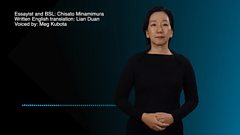Esther Inglis's musical self portraits
1574, and a baby girl on board a ship fleeing from France arrives in London. Esther Inglis went on to become a successful Tudor bookmaker and artist and Eleanor Chan argues that the inclusion of psalm music in the self-portraits created by Inglis is a coded way of symbolising belonging at a time of religious strife. The essay draws on research done by New Generation Thinker Eleanor Chan, who has been working as a Leverhulme Early Career Fellow at the University of Manchester and the Warburg Institute.
Work by Esther Inglis is included in the exhibition Now You See Us: Women Artists in Britain 1520–1920 which runs at Tate Britain until October 13th 2024.
You can hear more about Tudor music and art in a Free Thinking episode called A Lively Tudor World which features Eleanor Chan and Christina Faraday. It's available on Βι¶ΉΤΌΕΔ Sounds. You can also find Eleanor Chan's essay about another Tudor composer - the discordant tale of Thomas Weelkes.
Producer: Luke Mulhall
Duration:
This clip is from
Featured in...
![]()
Wind Down
Soothing stories and soundscapes to help you drift off to sleep.







